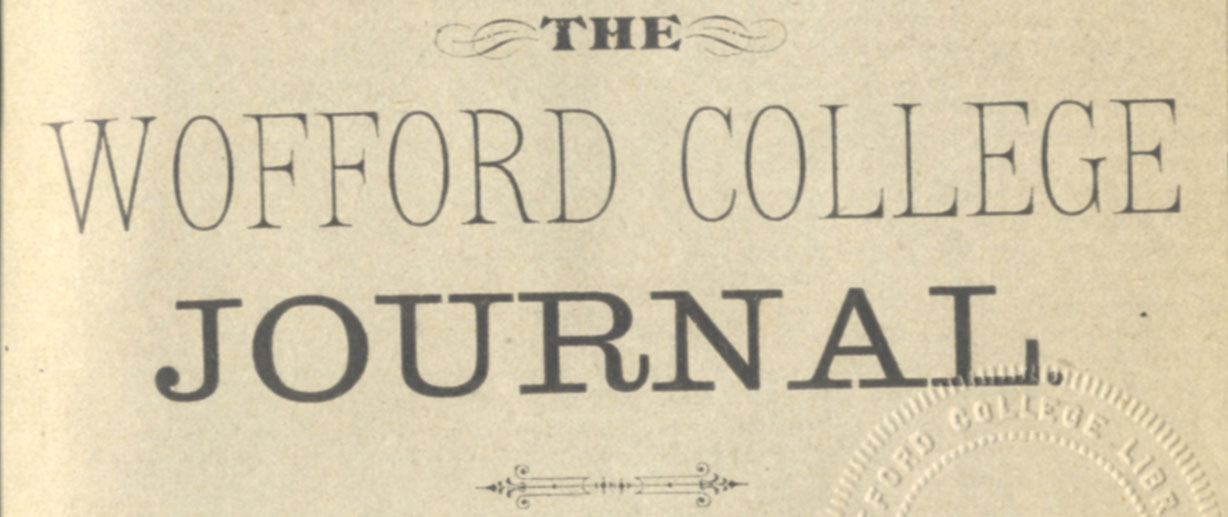In January 1889, a group of students from the Calhoun and Preston literary societies got together to launch the Wofford College Journal, the oldest of our three student publications.
The Journal, which continues publishing today as a section of the Bohemian, the college yearbook, has for most of those 130 years been the student literary magazine.
When the Journal started publishing, it was more than just a literary publication. With no newspaper on campus and no alumni magazine, it served those functions as well. In the 26 years between the founding of the Journal and the first issue of the Old Gold and Black in 1915, the Journal remained a primary source for information about what was happening on campus. Moreover, since only a few issues still remain of the Old Gold and Black between 1915 and 1930, researchers rely on the Journal for those years too.
So, what was in that January 1889 Journal? The editors began with a statement: “The Wofford College Journal, in making its entrance into life, does not come with aspirations to fame, nor to a place among the leading literary journals of the day. It was conceived of an honest purpose among the young men of the college to further their own development, and to give to the public the matter of the best literary character they are capable of.”
On that same page, the editor in chief, Ellison D. Smith, Class of 1889 (later a six-term U.S. senator from South Carolina), published a piece by his older brother, the Rev. A. Coke Smith, an 1872 graduate, the college’s financial agent and later a Methodist bishop. The essay, “A plea for liberal culture,” used words that might ring familiar today: “The mercenary spirit so characteristic of this age is affecting detrimentally our educational interests. Nothing is allowed as worthy of pursuit which will not bring its speedy return in gold or glory.” He continued, “one by one the different branches of the old college curriculum are brought into question and too often either entirely surrendered or so crippled as to be of little use.”
The spirit of hurry, which possesses the American mind… cannot take time to lay the foundation of a broad culture in the study of ancient and modern classics, and the sciences.
Boys must hurry through school and college and be in business at twenty, or the opportunity to make a fortune may be lost.”
Three pieces in this first Journal were penned by faculty members: The aforementioned A. Coke Smith, “An Aspect of the German Novel” by Professor J. H. Marshall and a retrospective on the Class of 1867 by Professor Daniel DuPré.
The remainder of the issue included a news article about alumni fundraising, a series of alumni notes that would remind any reader today of Wofford Today, some news briefs, a reference to a bill pending in Congress and reviews of some other literary magazines. This general format — literary articles, opinion pieces, alumni notes, campus news and notes about articles in other college literary magazines — would be the pattern for much of the next generation. Still, it’s interesting to look back to student and faculty writing of 130 years ago this winter and see that some things remain constant even in a very different age.
By Dr. Phillip Stone ’94, college archivist
